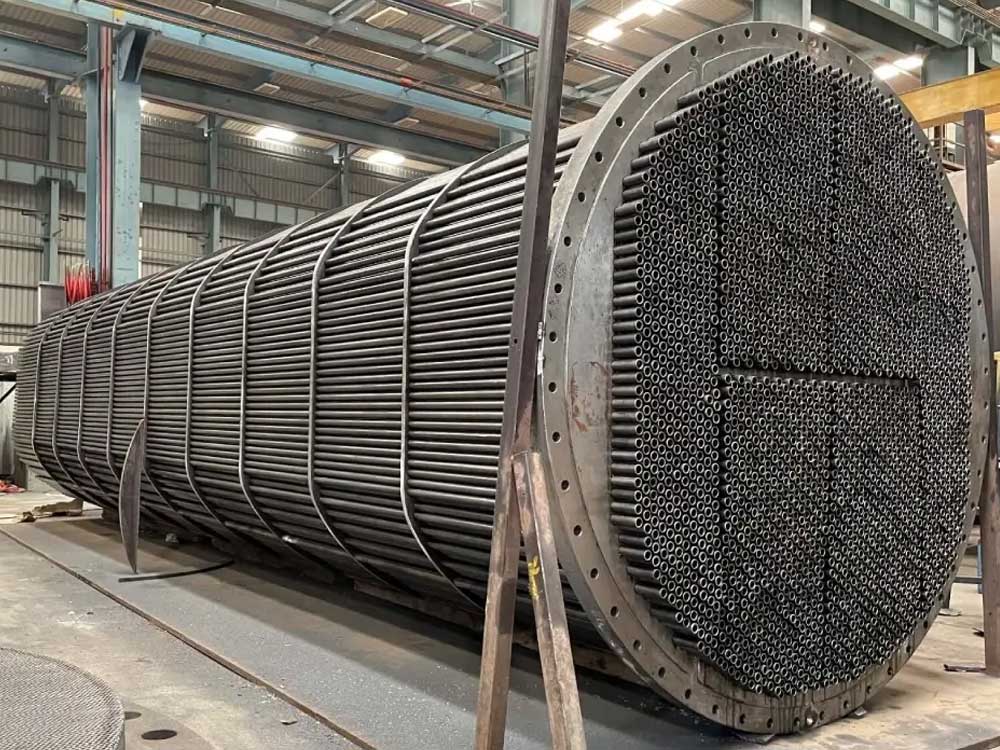Heat Exchanger
The shell and tube heat exchanger is a class of heat exchanger designs. It is the most common type of heat exchanger in oil refineries and other large chemical processes, and is suited for higher-pressure applications.
A heat exchanger is a mechanical device designed to efficiently transfer heat between two or more fluids—liquid, gas, or both—without mixing them. It plays a vital role in various industries such as HVAC, power generation, chemical processing, refrigeration, and automotive systems. The primary objective of a heat exchanger is to either heat or cool a fluid by utilizing the thermal energy of another. Common types include shell and tube, plate, air-cooled, and finned tube heat exchangers. Materials used depend on application needs and include stainless steel, copper, aluminum, and titanium. Heat exchangers are critical in maintaining energy efficiency, reducing operational costs, and supporting environmental sustainability by minimizing waste heat. Their design considerations involve temperature range, pressure drop, corrosion resistance, and ease of maintenance. Properly selected and maintained, heat exchangers ensure optimal system performance, safety, and reliability in both industrial and domestic applications.
One fluid runs through the tubes and another fluid flows over the tubes (Through the shell) to transfer heat between the two fluids .The set of tubes called tube bundle and may composed by several types of tubes plains, longitudinally finned etc.

